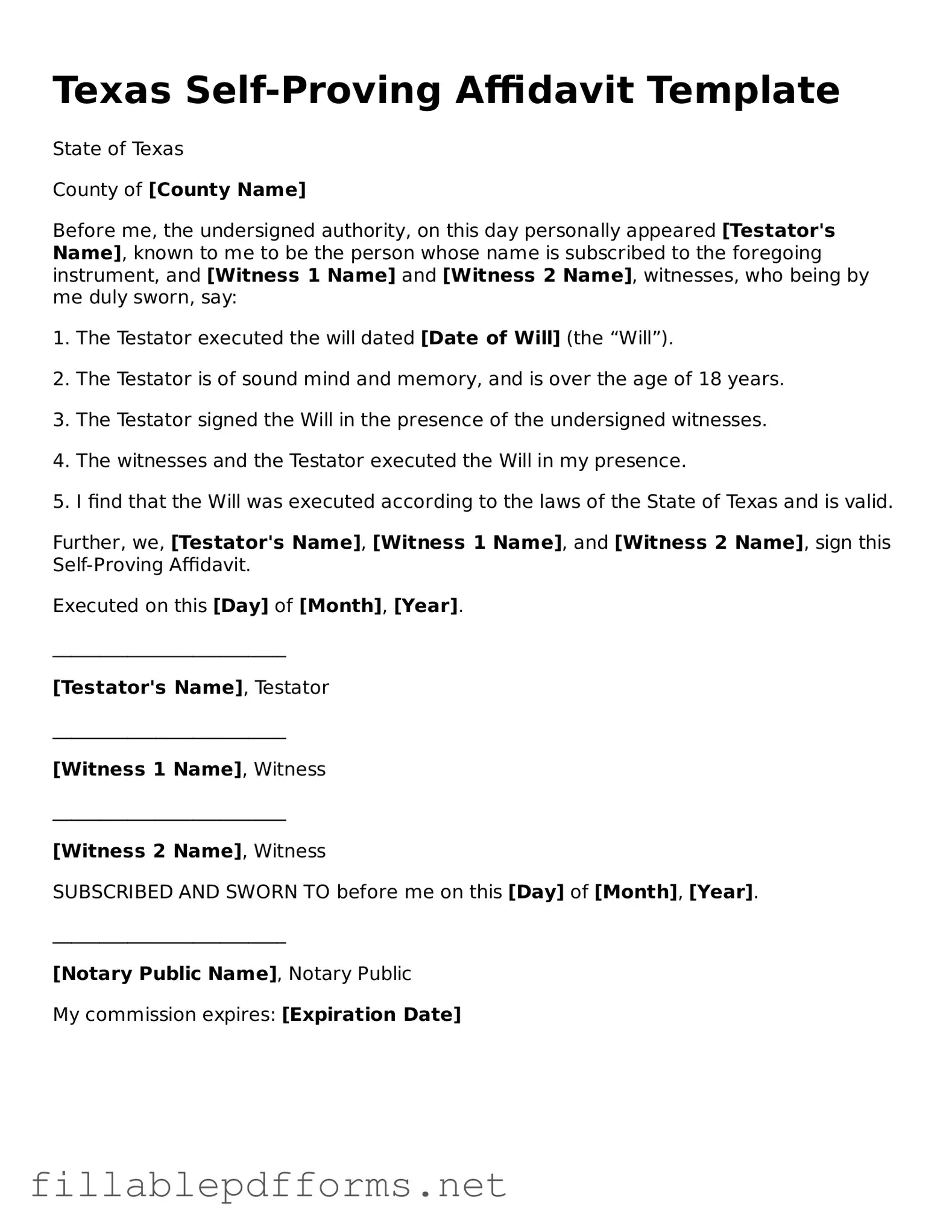Attorney-Verified Self-Proving Affidavit Form for Texas State
The Texas Self-Proving Affidavit is a legal document that allows a testator’s will to be validated without the need for witnesses to testify in court. This form simplifies the probate process by confirming that the will was executed properly and reflects the testator's intentions. By using this affidavit, individuals can save time and reduce complications during the administration of an estate.
Launch Editor Here
